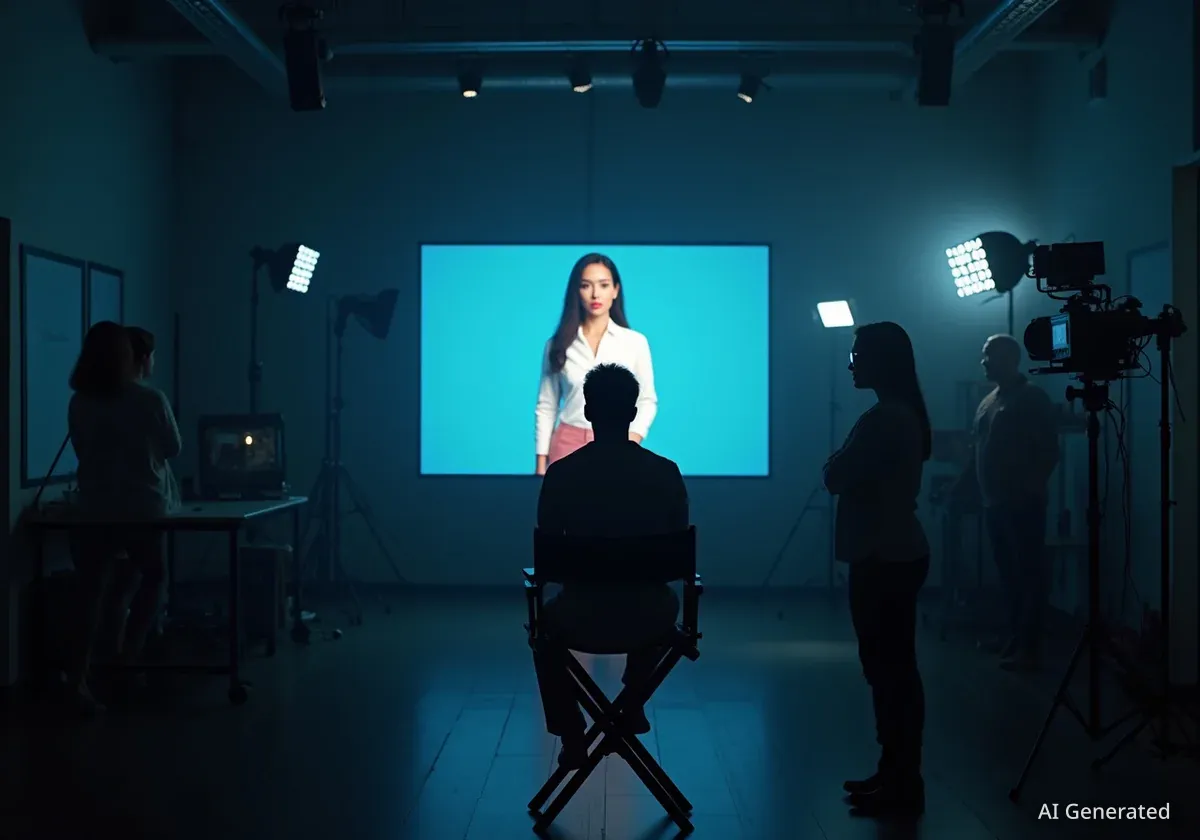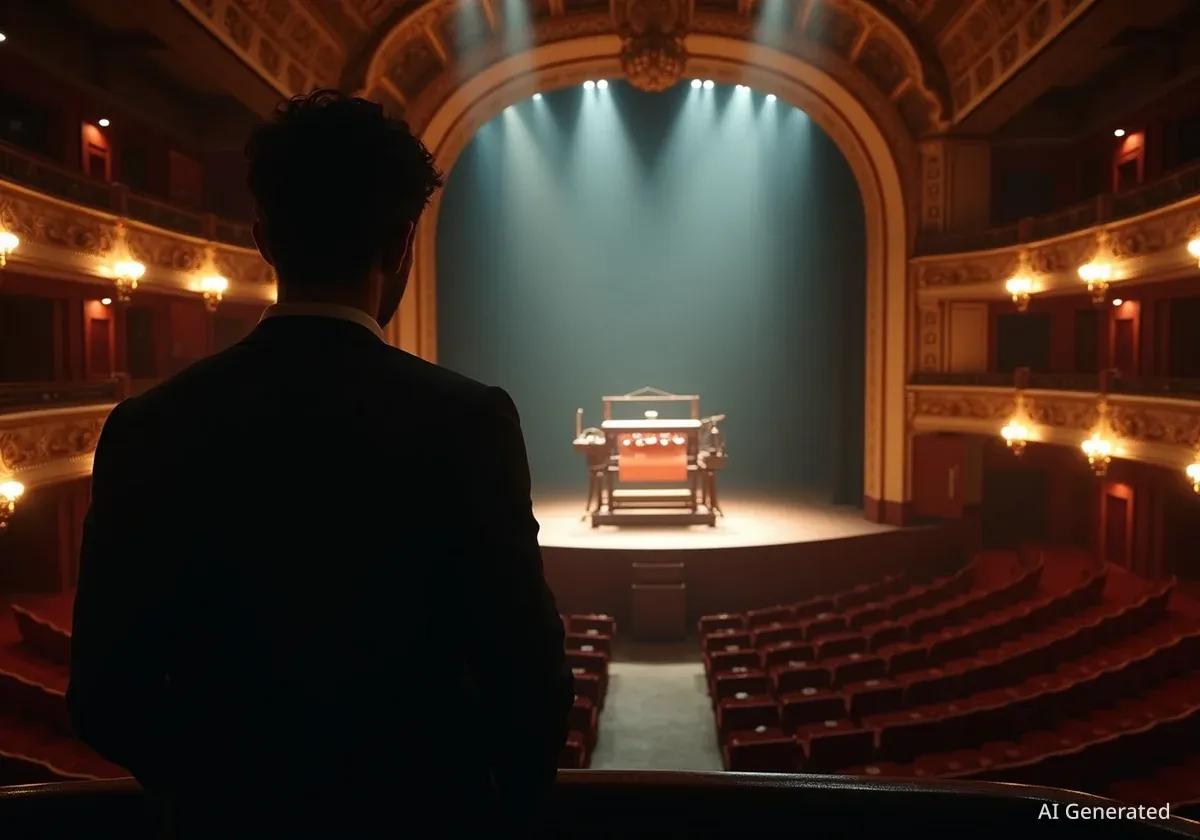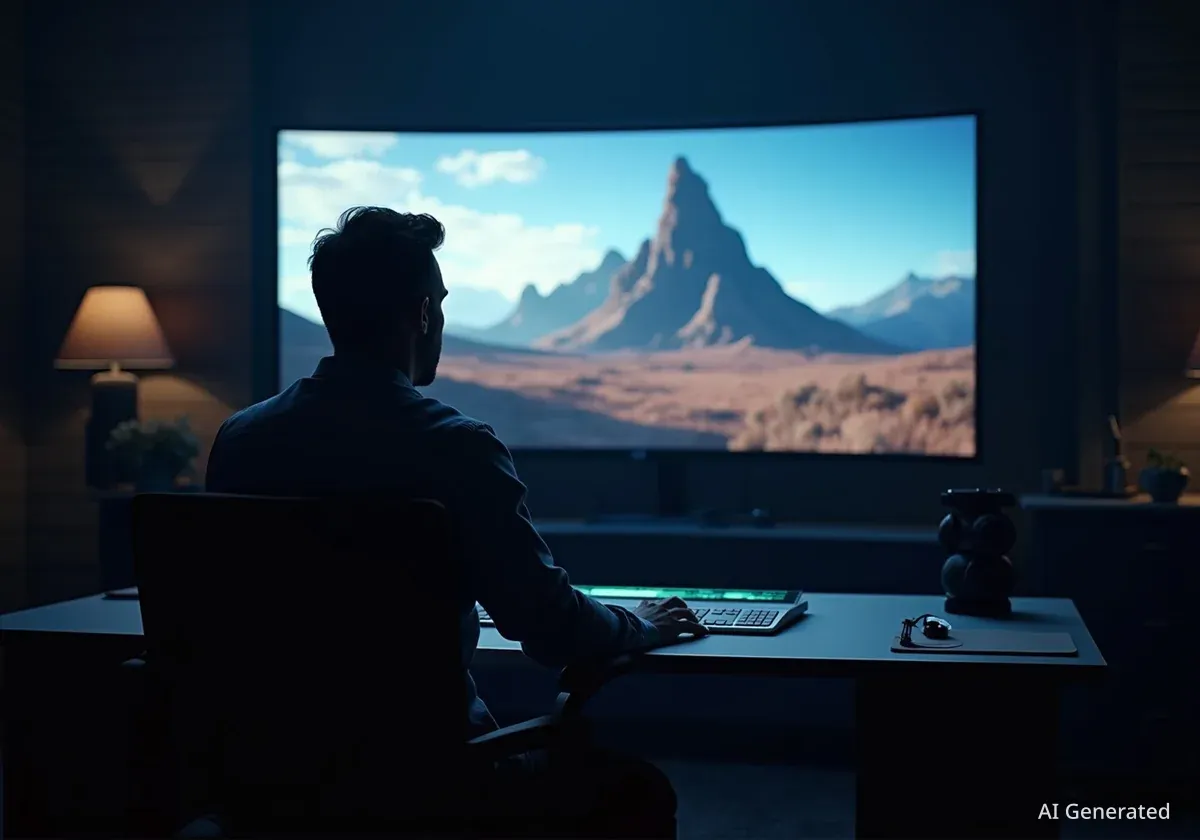The introduction of Tilly Norwood, a digital avatar marketed as an AI actress, has ignited a significant debate within the entertainment industry. Developed by AI production house Particle6 and its talent studio Xicoia, the project aims to position AI-generated characters alongside human actors, prompting both interest from some agencies and strong criticism from performers' unions like SAG-AFTRA.
Key Takeaways
- Tilly Norwood is an AI-generated digital avatar created by the company Xicoia, which is marketing her as the first AI actress.
- Xicoia's CEO, Eline Van der Velden, stated that some talent agencies have shown interest in representing the digital character.
- The avatar is powered by an AI model trained on footage of real people and requires human oversight to function.
- SAG-AFTRA, the actors' union, has criticized the project, highlighting concerns over job displacement and the devaluing of human performance.
Introducing a Digital Performer
At the Zurich Film Festival, Eline Van der Velden, the founder and CEO of Particle6 and its subsidiary Xicoia, announced the launch of Tilly Norwood. The company describes Norwood as a lifelike digital avatar created to perform in various media. Van der Velden expressed high ambitions for the project, stating she wants “Tilly to be the next Scarlett Johansson or Natalie Portman.”
According to Van der Velden, several talent agents have already expressed interest in the possibility of representing Norwood. While the specific agencies have not been named, the announcement itself has generated considerable discussion across entertainment and technology news outlets.
So far, Tilly Norwood's most prominent appearance has been in a promotional video from Particle6 titled “AI Commissioner,” which parodies the television production process. This video serves as a showcase for the character's potential applications.
What is a Digital Avatar?
Unlike a sentient AI, a digital avatar like Tilly Norwood is a sophisticated animated character. Its movements, speech, and expressions are generated by an AI model. This model is trained on large datasets, which in this case includes footage of human actors. The system still requires significant human input and creative direction to generate performances.
The Technology and Capabilities
Tilly Norwood is not an autonomous entity capable of independent thought or action. Instead, she is a digital puppet controlled by advanced technology. The AI model behind her synthesizes speech and movement based on the data it was trained on and the specific instructions it receives from its operators at Xicoia.
Xicoia has outlined plans to develop interactive capabilities for the avatar. The company aims for Tilly to be able to “engage in unscripted conversations, perform monologues, respond to trends in real time and adapt tone and references to suit platform-specific audiences,” as reported by Deadline. This functionality would rely on a combination of automated responses and direct “human creative oversight.”
The company is marketing the avatar's controllability as a key feature. In the “AI Commissioner” video, another digital character remarks that he is in love with Tilly because “she’ll do anything I say,” a line that has drawn scrutiny for its implications.
Historical Precedent: Aki Ross
The concept of a virtual actor is not entirely new. In 2001, the movie Final Fantasy: The Spirits Within introduced Aki Ross, a computer-generated character voiced by actress Ming-Na Wen. The film's studio, Squaresoft, attempted to market Aki Ross as a real-world celebrity, but the effort did not gain long-term traction.
Industry Reaction and Concerns
The promotion of Tilly Norwood has been met with significant pushback, particularly from organizations representing human performers. SAG-AFTRA, the union representing approximately 160,000 actors and media professionals, issued a strong statement in response to the news.
“It doesn’t solve any ‘problem’ — it creates the problem of using stolen performances to put actors out of work, jeopardizing performer livelihoods and devaluing human artistry.”
– SAG-AFTRA Statement
The union's statement reflects widespread anxiety within the creative community about the potential for generative AI to replace human jobs. The use of AI models trained on existing performances raises complex legal and ethical questions about copyright, compensation, and the very definition of creative work.
Proponents of the technology, including Van der Velden, argue that it opens new creative possibilities. However, critics maintain that such projects could lead to a future where the unique contributions of human actors are marginalized in favor of more easily controlled and endlessly replicable digital counterparts.
The Broader Push for AI in Entertainment
The debut of Tilly Norwood is part of a larger trend of generative AI technologies entering the creative industries. Companies are developing AI tools for various aspects of production, from scriptwriting and storyboarding to visual effects and even directing.
Shortly after the Tilly Norwood announcement, Italian producer Andrea Iervolino revealed that he has been developing an AI director. The goal, he stated, is to create a system that can “celebrate the poetic and dreamlike language of great European cinema.”
This push is often framed by its developers as an inevitable technological advancement. The marketing strategy for these AI products frequently emphasizes their potential to disrupt traditional workflows. By generating buzz and normalizing the idea of AI creatives, companies like Xicoia hope to create a market for their products before industry standards and regulations are fully established.
The central debate remains whether these tools will augment human creativity or ultimately supplant it. While Tilly Norwood may not become a major star, her introduction serves as a clear signal of the technological changes facing Hollywood and the critical conversations that are now taking place about the future of entertainment.



